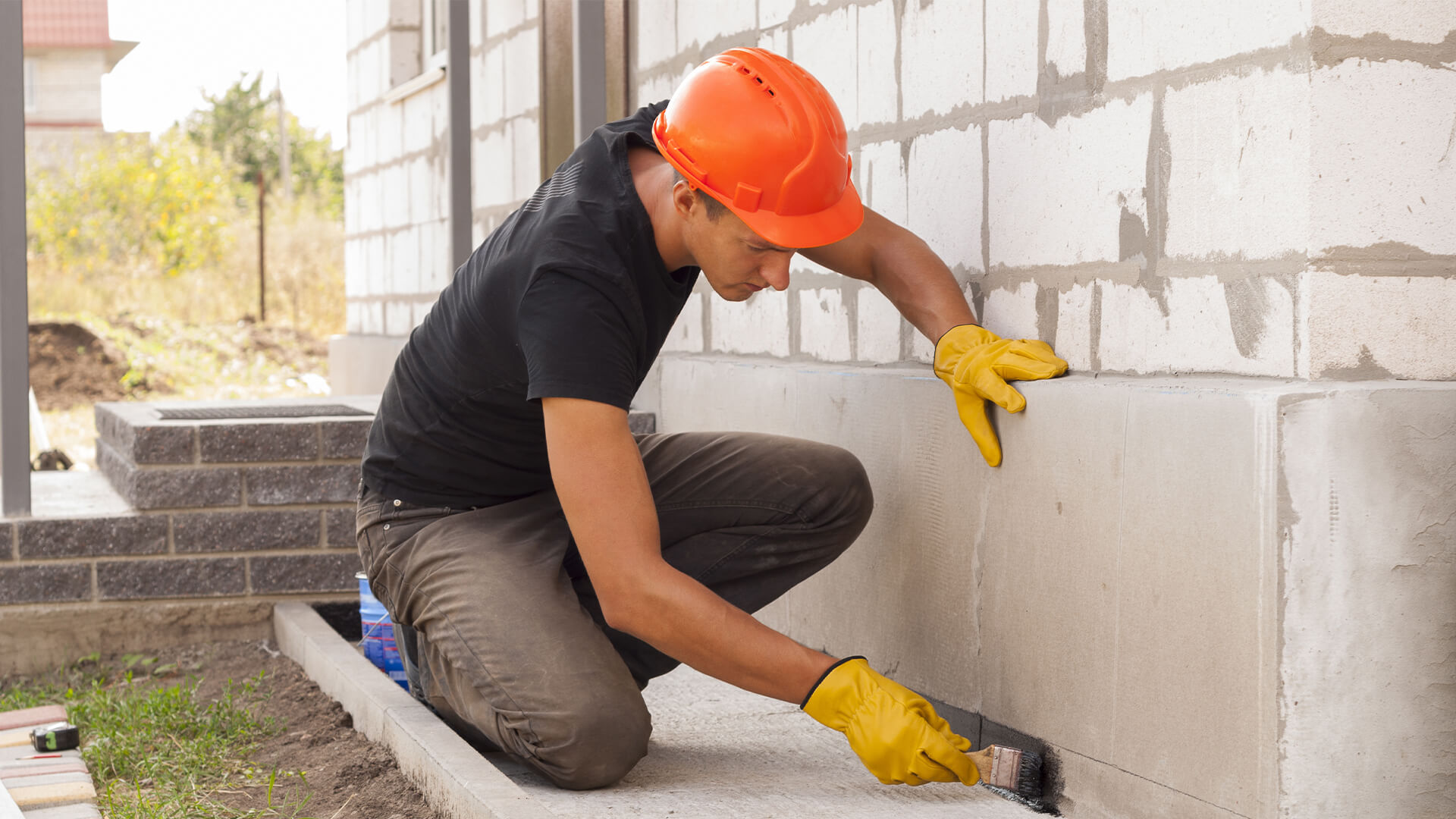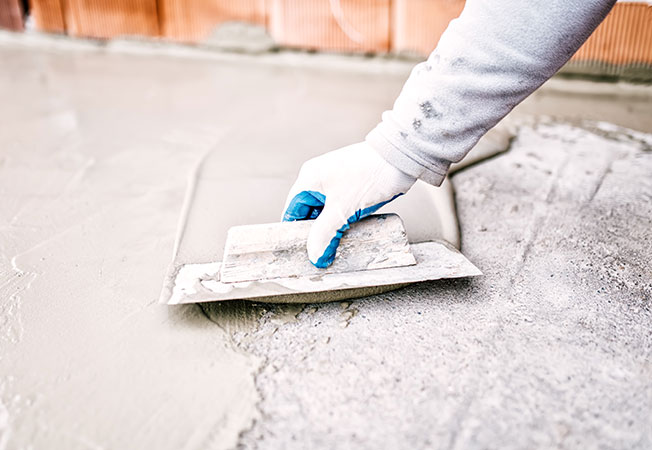What Makes Water Solutions Omaha a Reliable Option for Homeowners
Exactly How Waterproofing Works: A Thorough Appearance at Methods and Technologies
Waterproofing is essential for shielding frameworks from moisture-related damages. It includes numerous techniques and modern technologies that produce obstacles against water invasion. Traditional methods, such as compacted clay, exist side-by-side with contemporary developments like liquid-applied membranes. Understanding the subtleties of these strategies is vital for efficient application. However, the efficiency of any waterproofing service pivots not just on the methods made use of but likewise on ongoing upkeep and inspection. What are the crucial variables that affect long-term performance?
Understanding the Essentials of Waterproofing
Waterproofing is a vital procedure that secures frameworks from water invasion, which can result in considerable damages over time. This approach entails the application of different materials and strategies designed to develop an obstacle versus dampness. The primary goal is to stop water from passing through surfaces, which can cause wear and tear, mold and mildew development, and structural instability.Various factors influence the option of waterproofing method, consisting of the kind of framework, its place, and ecological problems. Recognizing the physics of water activity and the residential properties of different products is vital in choosing a reliable waterproofing solution.Effective waterproofing not only safeguards structures yet additionally improves their durability and stability. Commonly, it is integrated into the design stage of building to guarantee thorough defense. As recognition of water-related problems expands, the value of comprehending waterproofing basics becomes increasingly clear to designers, building contractors, and homeowner alike.
Standard Waterproofing Methods
Typical waterproofing methods have been utilized for centuries, relying on time-tested strategies and products to safeguard frameworks from water damages. Among the oldest methods includes the use of clay, which, when compressed, develops an all-natural obstacle versus moisture. Additionally, asphalt, a sticky, black material obtained from oil, has been utilized for its waterproof buildings, usually put on roof coverings and foundations.Another technique entails the application of lime-based plasters, which offer a breathable layer that allows moisture to run away while preventing water ingress. Thatch roof, a traditional method still seen in some societies, offers superb waterproofing due to its securely packed straw layers.Moreover, making use of rock and block has been famous, as these materials are inherently resistant to water when properly installed. Generally, typical waterproofing techniques highlight the importance of selecting appropriate materials and building and construction practices to boost toughness versus water invasion.
Modern Waterproofing Technologies
Developments in modern waterproofing innovations have reinvented the way frameworks are shielded from water damage. Cutting-edge strategies such as liquid-applied membranes and innovative sealants have improved the performance and adaptability of waterproofing options. These modern technologies enable seamless application, reducing the threat of leakages and guaranteeing detailed insurance coverage over intricate surfaces.Moreover, the assimilation of clever modern technologies, such as wetness sensing units and automated surveillance systems, makes it possible for real-time evaluation of waterproofing performance. This proactive method helps with timely maintenance and lowers lasting repair service costs.Additionally, innovations in spray-applied finishes use quick application and superb adhesion, adapting to various substrates while offering robust protection. Methods like polymer-modified systems additionally improve versatility and resilience, making them suitable for diverse environments. Generally, modern-day waterproofing modern technologies not just minimize water invasion however additionally contribute to the longevity and sustainability of frameworks, noting a substantial change in the market.
Products Made Use Of in Waterproofing
The effectiveness of waterproofing services greatly depends on the products utilized in their application. Different materials are used to produce barriers versus water ingress, each with unique residential properties matched for various environments. Frequently used materials consist of membranes, layers, and sealants.Liquid-applied membrane layers, frequently made from polyurethane or acrylic, create a smooth barrier that adjusts to intricate surfaces. Sheet membrane layers, normally constructed from rubber or thermoplastic, deal longevity and are optimal for bigger areas. Furthermore, cementitious waterproofing products, composed of cementitious substances, provide exceptional attachment and flexibility.Sealants made from silicone or polyurethane are important for joints and joints, guaranteeing complete defense. Furthermore, sophisticated materials, such as geo-composite membranes, incorporate several features, enhancing efficiency. On the whole, the choice of waterproofing materials is vital in achieving long-lasting and reliable water resistance, tailored to specific job needs and ecological conditions.
Common Applications of Waterproofing
Waterproofing plays a crucial role in different fields, making sure the long life and integrity of frameworks. Typical applications consist of property services that safeguard homes, business infrastructure that safeguards organizations, and industrial setups that require durable defense versus moisture. Recognizing these applications highlights the importance of waterproofing in keeping both security and performance across various environments.
Residential Waterproofing Solutions
Many homeowners face challenges with wetness invasion, making efficient domestic waterproofing options crucial. Numerous approaches exist to address this issue, consisting of exterior and interior waterproofing systems. Inside remedies frequently involve the application of sealers and finishes to cellar wall surfaces, which aid stop water seepage. Exterior approaches usually consist of the setup of water drainage systems and water-proof membranes that draw away water far from the foundation.Additionally, property owners may take into consideration sump pumps to eliminate water build-up and dehumidifiers to regulate humidity levels. Proper grading and the usage of rain gutters likewise play an important role in taking care of water flow around the home. By carrying out these methods, house owners can considerably reduce the danger of water damages internet and mold development, making sure a dry and secure living environment.

Industrial Infrastructure Protection
Effective waterproofing services play an important role in the security of commercial facilities. Water Solutions Omaha. These techniques are crucial for guarding structures, car parking structures, and bridges from water damage, which can compromise structural integrity and bring about expensive repair work. Common applications consist of the installation of membrane layers, coatings, and sealers that develop obstacles against dampness infiltration. Locations such as cellars, roofs, and outside wall surfaces are frequently prioritized to assure durability and longevity. In addition, waterproofing systems can improve energy efficiency by avoiding water-related issues that may bring about mold and mildew development and degeneration. By executing robust waterproofing measures, homeowner can shield their investments and keep operational efficiency, inevitably adding to the general sustainability of commercial facilities
Industrial Applications Overview
While various industries deal with distinct difficulties, the need for trustworthy waterproofing options stays a continuous in commercial applications. Industries such as production, building and construction, and power usually run into settings where moisture direct exposure can endanger structural stability and operational performance. In my explanation producing centers, waterproofing is crucial for shielding equipment and products from water damage. In construction, it safeguards structures and cellars against groundwater infiltration. The power field counts on waterproofing for the defense of tools in hydroelectric plants and overseas structures. Additionally, food processing industries make use of waterproofing to guarantee health and conformity with security browse this site requirements. In general, effective waterproofing remedies are vital for improving durability, security, and efficiency across numerous industrial settings.
Upkeep and Long Life of Waterproofing Solutions
Waterproofing remedies are created to provide lasting security versus wetness breach, regular upkeep is vital to assure their efficiency and long life. Routine inspections play a substantial duty in determining possible issues such as fractures, peeling off, or signs of water damage. Resolving these problems quickly can avoid further degeneration and pricey repairs.Additionally, cleansing the surface of waterproofed areas assists get rid of dirt and debris that can compromise the honesty of the waterproofing barrier. It's likewise recommended to reapply safety coverings or sealers as advised by manufacturers to preserve excellent performance. Environmental variables, such as UV direct exposure and severe weather, can influence the life expectancy of waterproofing products, making routine evaluation important
Often Asked Inquiries
Can Waterproofing Be Applied in Cold Climate?
The inquiry of applying waterproofing in winter raises concerns about attachment and healing. Several items may not carry out at their finest in low temperature levels, demanding mindful selection and consideration of details guidelines for effective application.
The Length Of Time Does Waterproofing Usually Last?
The duration of waterproofing efficiency varies based on products and ecological factors. Typically, it can last from five to 10 years, however regular maintenance and evaluations are vital to guarantee peak performance and long life.
Is Do It Yourself Waterproofing Effective and Safe?
The efficiency and safety of DIY waterproofing depend on various factors, including material top quality and application strategy. While some people achieve sufficient results, others might run into concerns that jeopardize lasting security and structural honesty.
What Are the Signs of Failing Waterproofing?
Signs of stopping working waterproofing consist of visible water spots, peeling paint, mold and mildew growth, stuffy smells, and wetness in walls or ceilings - Landscape drainage Omaha. These indicators suggest compromised barriers, demanding timely inspection and prospective remediation to stop further damages
How Do I Select the Right Waterproofing Contractor?
